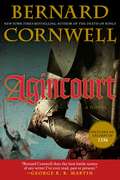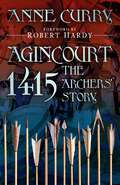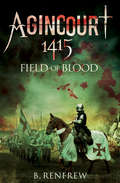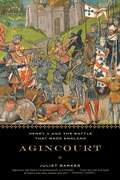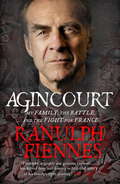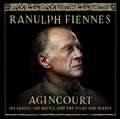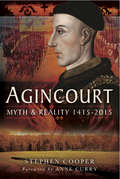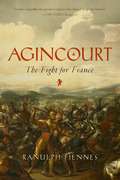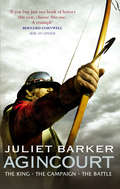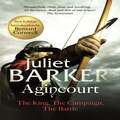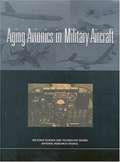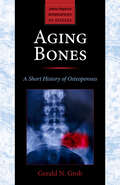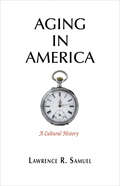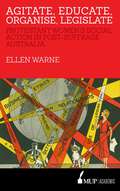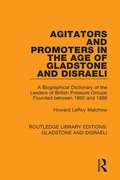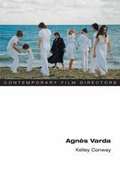- Table View
- List View
Aggressive Princess: Volume 5 (Volume 5 #5)
by Qing Hanonce through she became a humiliation will be killed by the poor princess and the dog worship hall soak in the pig cage poison assassination p p du jiuyue angry really really this reason too no natural reason with what you between the destruction of the crucial innocent woman s life p p du jiuyue refused come on the girl is not a vegetarian although you have countless schemes step by step this girl will not sit and wait for the death see the action what beg me to detoxify can ah a letter of divorce for my life freedom this girl give you detoxification .He a nation proton body bear mother enemy originally want to recruit a detoxification holy hand do not want to be attracted to her deeply unexpectedly his life should be a beautiful intelligent beauty side by side
Aggressive Princess: Volume 6 (Volume 6 #6)
by Qing Hanonce through she became a humiliation will be killed by the poor princess and the dog worship hall soak in the pig cage poison assassination p p du jiuyue angry really really this reason too no natural reason with what you between the destruction of the crucial innocent woman s life p p du jiuyue refused come on the girl is not a vegetarian although you have countless schemes step by step this girl will not sit and wait for the death see the action what beg me to detoxify can ah a letter of divorce for my life freedom this girl give you detoxification .He a nation proton body bear mother enemy originally want to recruit a detoxification holy hand do not want to be attracted to her deeply unexpectedly his life should be a beautiful intelligent beauty side by side
Agincourt
by Bernard Cornwell"The greatest writer of historical adventures today" (Washington Post) tackles his richest, most thrilling subject yet--the heroic tale of Agincourt.Young Nicholas Hook is dogged by a cursed past--haunted by what he has failed to do and banished for what he has done. A wanted man in England, he is driven to fight as a mercenary archer in France, where he finds two things he can love: his instincts as a fighting man, and a girl in trouble. Together they survive the notorious massacre at Soissons, an event that shocks all Christendom. With no options left, Hook heads home to England, where his capture means certain death. Instead he is discovered by the young King of England--Henry V himself--and by royal command he takes up the longbow again and dons the cross of Saint George. Hook returns to France as part of the superb army Henry leads in his quest to claim the French crown. But after the English campaign suffers devastating early losses, it becomes clear that Hook and his fellow archers are their king's last resort in a desperate fight against an enemy more daunting than they could ever have imagined. One of the most dramatic victories in British history, the battle of Agincourt--immortalized by Shakespeare in Henry V--pitted undermanned and overwhelmed English forces against a French army determined to keep their crown out of Henry's hands. Here Bernard Cornwell resurrects the legend of the battle and the "band of brothers" who fought it on October 25, 1415. An epic of redemption, Agincourt follows a commoner, a king, and a nation's entire army on an improbable mission to test the will of God and reclaim what is rightfully theirs. From the disasters at the siege of Harfleur to the horrors of the field of Agincourt, this exhilarating story of survival and slaughter is at once a brilliant work of history and a triumph of imagination--Bernard Cornwell at his best.
Agincourt 1415: The Archers' Story
by Robert Hardy Anne CurryThe battle of Agincourt still rings down through the centuries as a quite incredible victory by the outnumbered, happy few of England, enfeebled by disease and exhaustion, against the might of French chivalry. For many commentators then and now, it was the English archers who won the day for Henry V. This history re-tells the story of the battle and Henry V’s Normandy campaign from the perspective of the reputed commander of the English archers, Sir Thomas Erpingham.Sir Thomas, an experienced warrior from Norfolk with military experience dating back 40 years, is known for his brief but pivotal appearances in Shakespeare’s Henry V, where he is correctly portrayed as an elderly, white-haired veteran. At 57 he was one of the oldest there and a close personal confidant of the King. But what was his background? How did he command his archers to such a place in history? And what role did the longbow and battlefield tactics play in the final analysis of victory?Copiously illustrated with reproductions of original muster rolls and other material, Agincourt 1415 steers the reader through the history of the most important battle of the Hundred Years War from an entirely fresh perspective.
Agincourt, 1415: Field of Blood
by B. RenfrewA gripping fictionalized account of the landmark battle that turned the tide of history. On October 25, 1415, a trapped and vastly outnumbered force of exhausted and demoralized English archers and men-at-arms faced a colossal army of French knights on a desolate field in northern France. What took place that day became one of the greatest moments of the Hundred Years&’ War and English history. Based on chronicles of the times, Agincourt 1415: Field of Blood is a dramatic, minute-by-minute retelling of the battle as seen through the eyes of the commanders and soldiers on both sides. This is a brutal, bloody, and captivating retelling of a major British victory written by a Pulitzer Prize finalist. This work sets a new standard for historical fiction. &“If you look for a book to read on a chair next to the fireplace holding a glass of whiskey, this book is highly recommendable.&” —Historic Battlefield Tours
Agincourt: Henry V and the Battle That Made England
by Juliet BarkerWaged almost six centuries ago, the Battle of Agincourt still captivates. It is the classic underdog story, and generations have wondered how the English--outmanned by the French six to one--could have succeeded so bravely and brilliantly. Drawing on a wide range of sources, Juliet Barker paints a gripping narrative of the October 1415 clash between the outnumbered English archers and the heavily armored French knights. Populated with chivalrous heroes, dastardly spies, and a ferocious and bold king, AGINCOURT is as earthshaking as its subject--and confirms Juliet Barker's status as both a historian and a storyteller of the first rank.
Agincourt: My Family, the Battle and the Fight for France
by Ranulph Fiennes25 October 2015 was the 600th anniversary of the battle of Agincourt - a hugely resonant event in English (and French) history. Sir Ranulph Fiennes casts new light on this epic event, revealing that three of his own ancestors fought in the battle for Henry V, and at least one for the French. This is a unique perspective on Agincourt from a trained and decorated soldier. Ran reveals the truth behind the myths and legends of the battle. He tells how after the battle Henry V entertained his senior commanders to dinner, where they were waited on by captured French knights. There is the story of Sir Piers Legge of Lyme Hall, who lay wounded in the mud while his mastiff dog fought off the French men-at-arms. Then there is the legend that the French intended to cut off the first and second right hand fingers of every captured archer, to prevent him from using his bow. The archers raised those two fingers to the advancing French as a gesture of defiance. In this gripping study Sir Ranulph Fiennes brings back to life these stories and more, including those of his own ancestors, in a celebration of a historical event integral to English identity.Fiennes, arguably our greatest explorer...has delved deep into history to tell the story of his family's epic journey. - The Times
Agincourt: My Family, the Battle and the Fight for France
by Ranulph Fiennes25 October 2015 was the 600th anniversary of the battle of Agincourt - a hugely resonant event in English (and French) history. Sir Ranulph Fiennes casts new light on this epic event, revealing that three of his own ancestors fought in the battle for Henry V, and at least one for the French. This is a unique perspective on Agincourt from a trained and decorated soldier. Ran reveals the truth behind the myths and legends of the battle. He tells how after the battle Henry V entertained his senior commanders to dinner, where they were waited on by captured French knights. There is the story of Sir Piers Legge of Lyme Hall, who lay wounded in the mud while his mastiff dog fought off the French men-at-arms. Then there is the legend that the French intended to cut off the first and second right hand fingers of every captured archer, to prevent him from using his bow. The archers raised those two fingers to the advancing French as a gesture of defiance. In this gripping study Sir Ranulph Fiennes brings back to life these stories and more, including those of his own ancestors, in a celebration of a historical event integral to English identity.Fiennes, arguably our greatest explorer...has delved deep into history to tell the story of his family's epic journey. - The Times
Agincourt: My Family, the Battle and the Fight for France
by Ranulph Fiennes25 October 2015 is the 600th anniversary of the battle of Agincourt - a hugely resonant event in English (and French) history. Sir Ranulph Fiennes casts new light on this epic event, revealing that three of his own ancestors fought in the battle for Henry V, and at least one for the French. This is a unique perspective on Agincourt from a trained and decorated soldier. Ran reveals the truth behind the myths and legends of the battle. He tells how after the battle Henry V entertained his senior commanders to dinner, where they were waited on by captured French knights. There is the story of Sir Piers Legge of Lyme Hall, who lay wounded in the mud while his mastiff dog fought off the French men-at-arms. Then there is the legend that the French intended to cut off the first and second right hand fingers of every captured archer, to prevent him from using his bow. The archers raised those two fingers to the advancing French as a gesture of defiance. In this gripping new study Sir Ranulph Fiennes brings back to life these stories and more, including those of his own ancestors, in a celebration of a historical event integral to English identity.(P)2014 Hodder & Stoughton
Agincourt: Myth and Reality, 1415–2015
by Stephen Cooper Anne CurryThe overwhelming victory of Henry V's English army at Agincourt in October 1415 has passed into myth as one of the defining events of the Hundred Years War against France, as a feat of arms outshining the previous famous English victories at Crcy and Poitiers, and as a milestone in English medieval history. This epic story of how an exhausted, outnumbered army, commanded by an inspirational leader, crushed a huge French force on French soil has given rise to legends and misconceptions that make it difficult for us to reach a clear understanding of what really happened on the battlefield 600 years ago. But that is what Stephen Cooper attempts in this thoroughgoing, perceptive and fascinating reconstruction and reassessment of the battle and its history. In graphic detail he describes the battle itself and the military expedition that led to it. He examines the causes of the conflict and the controversies associated with it, and traces how the story of the battle has been told over the centuries, by eyewitnesses and chroniclers and by the historians of the present day.As featured in the Yorkshire Post, The Star (Sheffield) and Rotherham Advertiser.
Agincourt: The Fight for France
by Ranulph FiennesSir Ranulph Fiennes' dynamic account of the Battle of Agincourt gives a unique perspective on one of the most significant battles in English history. On 25th October 1415, on a French hillside near the village of Agincourt, four men sheltered from the rain and prepared for battle. All four were English knights—ancestors of Sir Ranulph Fiennes—and part of the army of England's King Henry V. Across the valley, four sons of the French arm of the Fiennes family were confident that the Dauphin's army would win the day . . . Sir Ranulph Fiennes explains how his own ancestors were key players through the centuries of turbulent Anglo-French history that led up to Agincourt, and he uses his experience as expedition leader and soldier to give us a fresh perspective on one of the bloodiest periods of medieval history. With fascinating detail on the battle plans, weaponry, and human drama of Agincourt, this is a gripping evocation of a historical event integral to English identity. Six hundred years after the Battle of Agincourt, Sir Ranulph Fiennes casts new light on this epic event that has resonated throughout British and French history.
Agincourt: The King, the Campaign, the Battle
by Juliet BarkerAgincourt took place on 25 October 1415 and was a turning-point not only in the Hundred Years War between England and France but also in the history of weaponry. Azincourt (as it is now) is in the Pas-de-Calais, and the French were famously defeated by an army led by Henry V. Henry V's stunning victory revived England's military prestige and greatly strengthened his territorial claims in France. The exhausted English army of about 9,000 men was engaged by 20,000 Frenchmen, but the limited space of battle favoured the more compact English forces. The undisciplined charges of the French combined with the exceptional skill of the English archers contributed to a pivotal moment in European warfare. Not more than 1,600 English soldiers died; the French probably lost more than 6,000 men.Juliet Barker's shimmeringly brilliant narrative commemorates and analyses a canonical battle in British history.
Agincourt: The King, the Campaign, the Battle
by Juliet BarkerAgincourt took place on 25 October 1415 and was a turning-point not only in the Hundred Years War between England and France but also in the history of weaponry. Azincourt (as it is now) is in the Pas-de-Calais, and the French were famously defeated by an army led by Henry V. Henry V's stunning victory revived England's military prestige and greatly strengthened his territorial claims in France. The exhausted English army of about 9,000 men was engaged by 20,000 Frenchmen, but the limited space of battle favoured the more compact English forces. The undisciplined charges of the French combined with the exceptional skill of the English archers contributed to a pivotal moment in European warfare. Not more than 1,600 English soldiers died; the French probably lost more than 6,000 men.Juliet Barker's shimmeringly brilliant narrative commemorates and analyses a canonical battle in British history.
Agincourt: The King, the Campaign, the Battle
by Juliet BarkerAgincourt took place on 25 October 1415 and was a turning-point not only in the Hundred Years War between England and France but also in the history of weaponry. Azincourt (as it is now) is in the Pas-de-Calais, and the French were famously defeated by an army led by Henry V. Henry V's stunning victory revived England's military prestige and greatly strengthened his territorial claims in France. The exhausted English army of about 9,000 men was engaged by 20,000 Frenchmen, but the limited space of battle favoured the more compact English forces. The undisciplined charges of the French combined with the exceptional skill of the English archers contributed to a pivotal moment in European warfare. Not more than 1,600 English soldiers died; the French probably lost more than 6,000 men.Juliet Barker's shimmeringly brilliant narrative commemorates and analyses a canonical battle in British history.
Aging Avionics in Military Aircraft
by National Research Council Air Force Science Technology BoardA summary of Aging Avionics in Military Aircraft
Aging Bones: A Short History of Osteoporosis (Johns Hopkins Biographies of Disease)
by Gerald N. GrobHow osteoporosis went from a normal aging process to a disease.In the middle of the twentieth century, few physicians could have predicted that the modern diagnostic category of osteoporosis would emerge to include millions of Americans, predominantly older women. Before World War II, popular attitudes held that the declining physical and mental health of older persons was neither preventable nor reversible and that older people had little to contribute. Moreover, the physiological processes that influenced the health of bones remained mysterious. In Aging Bones, Gerald N. Grob makes a historical inquiry into how this one aspect of aging came to be considered a disease.During the 1950s and 1960s, as more and more people lived to the age of 65, older people emerged as a self-conscious group with distinct interests, and they rejected the pejorative concept of senescence. But they had pressing health needs, and preventing age-related decline became a focus for researchers and clinicians alike.In analyzing how the normal aging of bones was transformed into a medical diagnosis requiring treatment, historian of medicine Grob explores developments in medical science as well as the social, intellectual, economic, demographic, and political changes that transformed American society in the post–World War II decades.Though seemingly straightforward, osteoporosis and its treatment are shaped by illusions about the conquest of disease and aging. These illusions, in turn, are instrumental in shaping our health care system. While bone density tests and osteoporosis treatments are now routinely prescribed, aggressive pharmaceutical intervention has produced results that are inconclusive at best. The fascinating history in Aging Bones will appeal to students and scholars in the history of medicine, health policy, gerontology, endocrinology, and orthopedics, as well as anyone who has been diagnosed with osteoporosis.
Aging in America: A Cultural History
by Lawrence R. SamuelAging is a preoccupation shared by beauty bloggers, serious journalists, scientists, doctors, celebrities—arguably all of adult America, given the pervasiveness of the crusade against it in popular culture and the media. We take our youth-oriented culture as a given but, as Lawrence R. Samuel argues, this was not always the case. Old age was revered in early America, in part because it was so rare. Indeed, it was not until the 1960s, according to Samuel, that the story of aging in America became the one we are most familiar with today: aging is a disease that science will one day cure, and in the meantime, signs of aging should be prevented, masked, and treated as a source of shame.By tracing the story of aging in the United States over the course of the last half century, Samuel vividly demonstrates the ways in which getting older tangibly contradicts the prevailing social values and attitudes of our youth-obsessed culture. As a result, tens of millions of adults approaching their sixties and seventies in this decade do not know how to age, as they were never prepared to do so.Despite recent trends that suggest a more positive outlook, getting old is still viewed in terms of physical and cognitive decline, resulting in discrimination in the workplace and marginalization in social life. Samuels concludes Aging in America by exhorting his fellow baby boomers to use their economic clout and sheer numbers to change the narrative of aging in America.
Aging in Twentieth-Century Britain (Berkeley Series in British Studies #12)
by Charlotte GreenhalghAs today’s baby boomers reach retirement and old age, this timely study looks back at the first generation who aged in the British welfare state. Using innovative research methods, Charlotte Greenhalgh sheds light on the experiences of elderly people in twentieth-century Britain. She adds further insights from the interviews and photographs of celebrated social scientists such as Peter Townsend, whose work helped transform care of the aged. A comprehensive and sensitive examination of the creative pursuits, family relations, work lives, health, and living conditions of the elderly, Aging in Twentieth-Century Britain charts the determined efforts of aging Britons to shape public understandings of old age in the modern era.
Aging in World History (Themes in World History)
by David G. TroyanskyIn Aging in World History, David G. Troyansky presents the first global history of aging. At a time when demographic aging has become a source of worldwide concern, and more people are reaching an advanced age than ever before, the history of old age helps us understand how we arrived at the treatment of aging in the modern world. This concise volume expands that history beyond the West to show how attitudes toward aging, the experiences of the aged, and relevant demographic patterns have varied and coalesced over time and across the world. From the ancient world to the present, this book introduces students and general readers to the history of aging on two levels: the experience of individual men and women, and the transformation of populations. With its attention to cultural traditions, medicalization, decades of historical scholarship, and current gerontology, Aging in World History is the perfect starting point for an exploration of this increasingly universal aspect of human experience.
Agitate, Educate, Organise, Legislate: Protestant Women's Social Action in Post-Suffrage Australia
by Ellen WarneAfter successfully agitating for the vote for women from the 1890s, Protestant women's organisations in Australia began to educate women at a grassroots level on effective ways of applying political pressure on a wide range of topics and social concerns. Positioning their organisations as non-party-political and separate from more overtly feminist groups, the Woman's Christian Temperance Union (WCTU); the Young Women's Christian Association (YWCA) and the Mothers' Union attracted women who were keen to work for change, and who were seeking to 'save' the individual as well as the greater society. These three organisations sought to agitate on a wide range of issues related to girls and women, connecting with public anxieties and highlighting particular vulnerabilities of girls and young women who lived alone in the city and had the potential to be exploited in the workforce. By the 1920s and 1930s these women's groups noted with concern the easier access to divorce and birth control in the Soviet Union and the growing influence of both Communism and 'Hitlerism' in galvanising young people. Agitate, Educate, Organise, Legislate explores the colourful debates and anxieties that were prevalent from the 1890s to the 1930s and the responses of the key women's organisations whose leadership and campaigns acknowledged that—outside of parliament and party politics—women's connection to political matters could be both innovative and socially influential.
Agitators and Promoters in the Age of Gladstone and Disraeli: A Biographical Dictionary of the Leaders of British Pressure Groups Founded Between 1865 and 1886 (Routledge Library Editions: Gladstone and Disraeli #2)
by Howard LeRoy MalchowOriginally published in 1983, Agitators and Promoters in the Age of Gladstone and Disraeli brings together the lives of thousands of persons, some famous, most modest and obscure, who were joined a century ago in pursuit of causes promising, a more just world which embodied much of the life and substance of the politics of during this time of transition. The book focuses on not simply the political Establishment but the members of government and legislature with their paid functionaries and party hacks, and much of the politicised sub-elite of a generation, including some three thousand persons from many layers of Victorian life. These are the organisers and leaders, the agitators and promoters of a host of causes.
Agnes Grey: Acton Bell (Modern Library Classics)
by Anne BrontëConcerned for her family’s financial welfare and eager to expand her own horizons, Agnes Grey takes up the position of governess, the only respectable employment for an unmarried woman in the nineteenth century. Unfortunately, Agnes cannot anticipate the hardship, humiliation, and loneliness that await her in the brutish Bloomfield and haughty Murray households. Drawn from Anne Brontë’s own experiences, Agnes Grey depicts the harsh conditions and class snobbery that governesses were often forced to endure. As Barbara A. Suess writes in her Introduction, “Brontë provides a portrait of the governess that is as sympathetic as her fictional indictment of the shallow, selfish moneyed class is biting.”
Agnes Martin: Night Sea (Afterall Books: One Work)
by Suzanne P. HudsonA close examination of Agnes Martin's grid painting in luminous blue and gold.Agnes Martin's Night Sea (1963) is a large canvas of hand-drawn rectangular grids painted in luminous blue and gold. In this illustrated study, Suzanne Hudson presents the painting as the work of an artist who was also a thinker, poet, and writer for whom self-presentation was a necessary part of making her works public. With Night Sea, Hudson argues, Martin (1912–2004) created a shimmering realization of control and loss that stands alone within her suite of classic grid paintings as an exemplary and exceptional achievement.Hudson offers a close examination of Night Sea and its position within Martin's long and prolific career, during which the artist destroyed many works as she sought forms of perfection within self-imposed restrictions of color and line. For Hudson, Night Sea stands as the last of Martin's process-based works before she turned from oil to acrylic and sought to express emotions of lightness and purity unburdened by evidence of human struggle.Drawing from a range of archival records, Hudson attempts to draw together the facts surrounding the work, which were at times obfuscated by the artist's desire for privacy. Critical responses of the time give a sense of the impact of the work and that which followed it. Texts by peers including Lenore Tawney, Donald Judd, and Lucy Lippard are presented alongside interviews with a number of Martin's friends and keepers of estates, such as the publisher Ronald Feldman and Kathleen Mangan of the Lenore Tawney archive, which holds correspondence between Martin and Tawney.
Agnes Varda (Contemporary Film Directors)
by Kelley ConwayBoth a precursor to and a critical member of the French New Wave, Agnès Varda weaves documentary and fiction into tapestries that portray distinctive places and complex human beings. Critics and aficionados have celebrated Varda's independence and originality since the New Wave touchstone Cleo from 5 to 7 (1962) brought her a level of international acclaim she has yet to relinquish. Film historian Kelley Conway traces Varda's works from her 1954 debut La Pointe Courte through a varied career that includes nonfiction and fiction shorts and features, installation art, and the triumphant 2008 documentary The Beaches of Agnès . Drawing on Varda's archives and conversations with the filmmaker, Conway focuses on the concrete details of how Varda makes films: a project's emergence, its development and the shifting forms of its screenplay, the search for financing, and the execution from casting through editing and exhibition. In the process, she departs from film history's traditional view of the French New Wave and reveals one artist's nontraditional trajectory through independent filmmaking. The result is an intimate consideration that reveals the artistic consistencies and bold changes in the career of one of the world's most exuberant and intriguing directors.
Agnes Varda between Film, Photography, and Art
by Rebecca J. DeRooAgnès Varda is a prolific film director, photographer, and artist whose cinematic career spans more than six decades. Today she is best known as the innovative "mother" of the French New Wave film movement of the 1950s and '60s and for her multimedia art exhibitions. Varying her use of different media, she is a figure who defies easy categorization. In this extensively researched book, Rebecca J. DeRoo demonstrates how Varda draws upon the histories of art, photography, and film to complicate the overt narratives in her works and to advance contemporary cultural politics. Based on interviews with Varda and unparalleled access to Varda's archives, this interdisciplinary study constructs new frameworks for understanding one of the most versatile talents in twentieth and twenty-first century culture.

